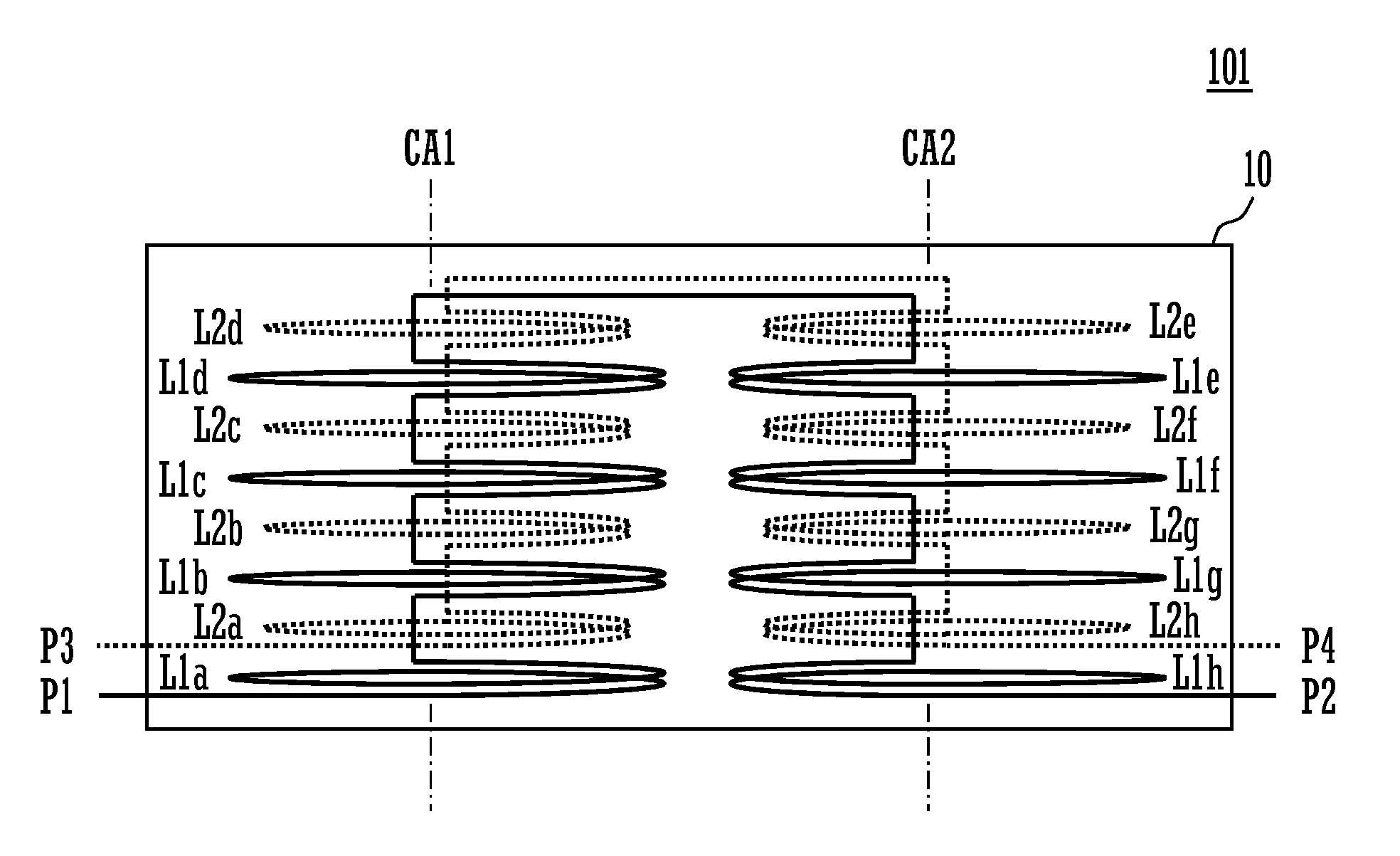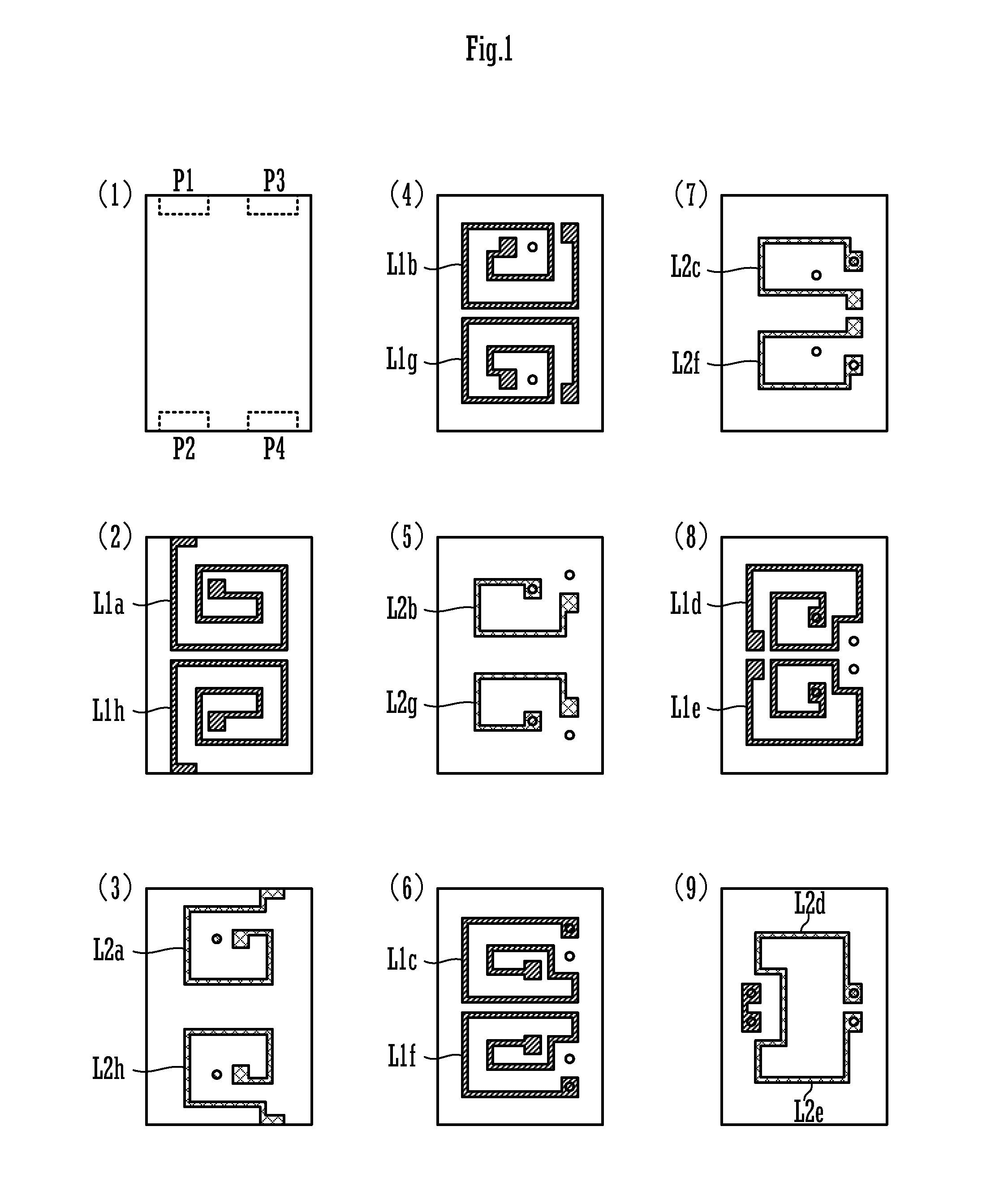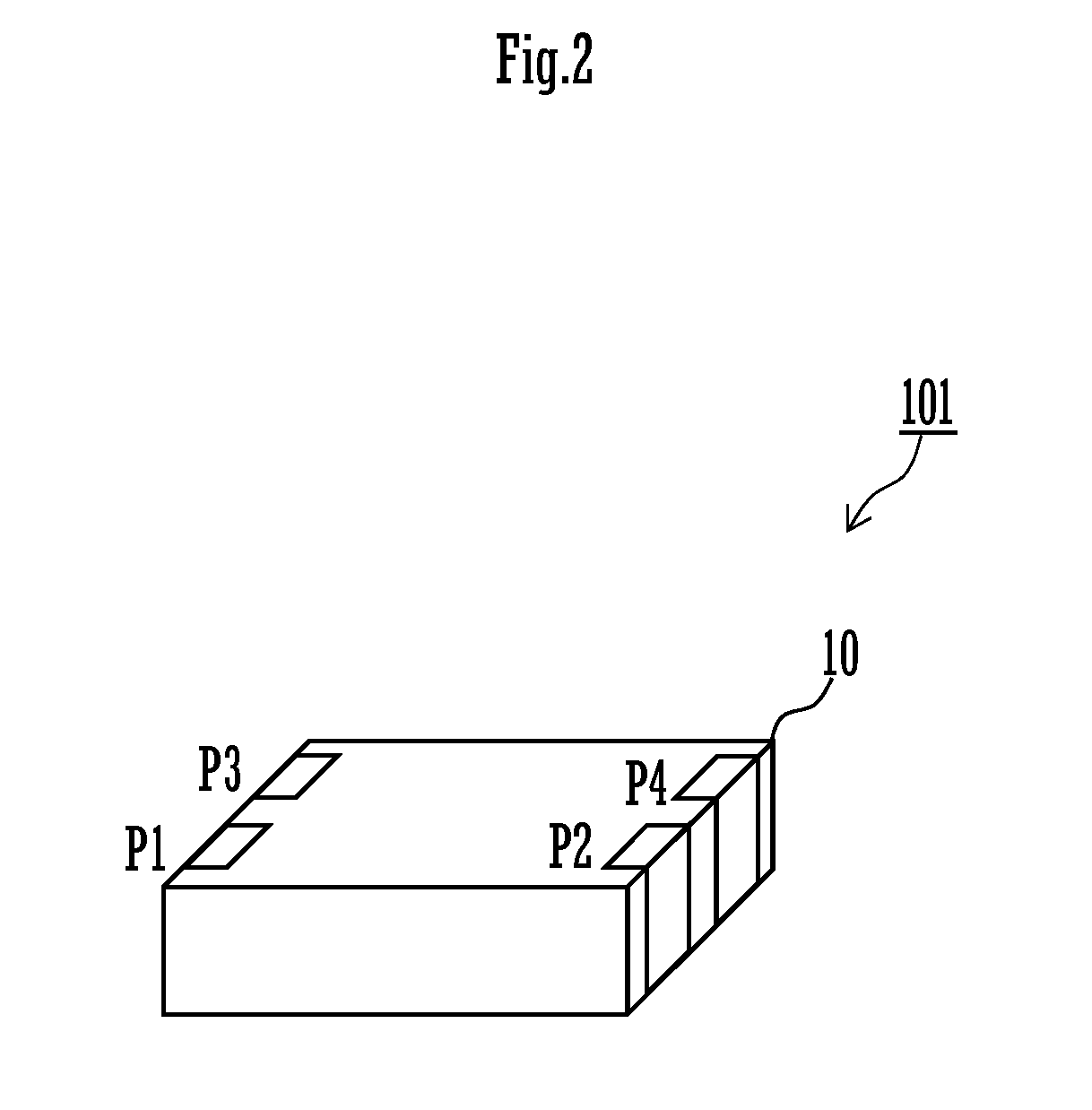Laminated common-mode choke coil
a common-mode choke coil and common-mode technology, applied in the direction of inductance, mutual inductance, fixed transformers, etc., can solve the disadvantageous increase of normal-mode signal insertion loss, difficult to increase the coupling degree between the primary coil and the secondary coil, and common-mode noise current attributed to asymmetry of the signal line. , to achieve the effect of increasing the coupling degree between the primary coil and the secondary coil, and increasing the degree of coupling stray capa
- Summary
- Abstract
- Description
- Claims
- Application Information
AI Technical Summary
Benefits of technology
Problems solved by technology
Method used
Image
Examples
first preferred embodiment
[0029]FIG. 1 is an exploded plan view showing conductor patterns and the like of the layers of a common-mode choke coil according to a first preferred embodiment of the present invention. FIG. 2 is an external perspective view of the common-mode choke coil 101 according to the first preferred embodiment.
[0030]The common-mode choke coil 101 is a laminated common-mode choke coil including a lamination element 10, which is made up of a plurality of base layers including base layers denoted by (1) to (9) in FIG. 1 being laminated on each other, and a primary coil and a secondary coil which are provided in the lamination element and coupled to each other.
[0031]In FIG. 1, the layer (1) is the lowermost layer, and the layer (9) is the uppermost layer. As shown in FIG. 1, electrodes of input / output terminals P1 to P4 are provided on the base layer (1). First annular conductors are provided on the base layers (2), (4), (6), and (8). Second annular conductors are provided on the base layers (...
second preferred embodiment
[0056]FIG. 6 is a schematic cross-sectional view of a common-mode choke coil 102 according to a second preferred embodiment of the present invention. In this common-mode choke coil 102, the outermost layers are each defined by a magnetic layer 10m, and the first annular conductors L1a to L1h and the second annular conductors L2a to L2h are provided on a non-magnetic layer (a low-permeability layer, a dielectric layer) 10n. The non-magnetic layer 10n and the annular conductors preferably have the structure identical to that of the common-mode choke coil 101 according to the first preferred embodiment. The relative permeability μr of the non-magnetic layer 10n is 1, and the relative permeability μr of the magnetic layer 10m is about 200 to 500, for example.
[0057]Since the magnetic field shown in FIG. 5A is generated by common-mode current, magnetic flux passes through the magnetic layers 10m. Accordingly, the inductance value becomes further greater effectively to common-mode noise. F...
third preferred embodiment
[0058]FIG. 7 is an exploded plan view showing conductor patterns and the like of the layers of a common-mode choke coil according to a third preferred embodiment of the present invention. FIG. 8 is an external perspective view of the common-mode choke coil 103 according to the third preferred embodiment. FIG. 9A is a cross-sectional view of the common-mode choke coil 103. FIG. 9B is a cross-sectional view of an ESD protection element portion.
[0059]The common-mode choke coil 103 is a laminated common-mode choke coil having a lamination element 10, which includes a plurality of base layers including base layers denoted by (1) to (24) in FIG. 7 being laminated on each other, and a primary coil and a secondary coil which are provided on the lamination element and coupled to each other.
[0060]FIG. 7 shows the layers (1) to (24) of the lamination element, and the shape of conductor patterns and the like provided on the layers. The layer (1) is the lowermost layer, and the layer (24) is the...
PUM
| Property | Measurement | Unit |
|---|---|---|
| thickness | aaaaa | aaaaa |
| thickness | aaaaa | aaaaa |
| thickness | aaaaa | aaaaa |
Abstract
Description
Claims
Application Information
 Login to View More
Login to View More - R&D
- Intellectual Property
- Life Sciences
- Materials
- Tech Scout
- Unparalleled Data Quality
- Higher Quality Content
- 60% Fewer Hallucinations
Browse by: Latest US Patents, China's latest patents, Technical Efficacy Thesaurus, Application Domain, Technology Topic, Popular Technical Reports.
© 2025 PatSnap. All rights reserved.Legal|Privacy policy|Modern Slavery Act Transparency Statement|Sitemap|About US| Contact US: help@patsnap.com



